What Is Spinnaker?
Spinnaker is an open-source, multi-cloud continuous delivery platform. Developed by Netflix, it supports fast and reliable releases through deployment automation. It is now maintained by the Continuous Delivery Foundation. Beyond deployment, Spinnaker offers visibility into application changes and execution. This is useful for managing complex microservices environments.
Spinnaker supports integrations with major cloud providers like AWS, Google Cloud, and Microsoft Azure, enabling cross-cloud deployments. It is well suited for managing deployments in Kubernetes and cloud native environments.
This is part of an extensive series of guides about Kubernetes.
Key Features of Spinnaker
Multi-Cloud Deployment
Spinnaker supports multi-cloud deployment by abstracting the complexities of various cloud environments. This abstraction layer simplifies the deployment process across different cloud platforms, enabling organizations to leverage the best services from each environment. Spinnaker minimizes vendor lock-in risks and enables deploying applications consistently across AWS, Azure, and Google Cloud.
Automated Pipelines
Spinnaker delivers repeatable deployment processes by orchestrating build, test, and deployment tasks into cohesive workflows. Automation minimizes human error and accelerates the release cycle. These pipelines can be customized with stages like testing, approvals, and rollbacks, ensuring releases meet quality standards and compliance requirements.
Progressive Deployment Strategies
Spinnaker supports multiple deployment strategies, enabling organizations to choose approaches that align with their needs and risk profiles. Progressive deployment strategies such as blue/green deployments, canary releases, and rolling updates are available, helping minimize downtime and risk. Organizations can safely test new features and gather user feedback without compromising stability.
Integration Capabilities
Spinnaker’s integration capabilities extend its functionality by interacting with a range of tools within the DevOps ecosystem. Whether integrating with Jenkins for CI workflows or linking with monitoring tools like Prometheus, Spinnaker ensures coordination across development processes. These integrations support an end-to-end automated delivery pipeline that aligns with existing workflows.
Monitoring and Alerts
Spinnaker’s monitoring and alerting features provide insights into deployment status and performance metrics. They allow teams to identify and address issues promptly, reducing downtime and maintaining service reliability. Customizable alerts and dashboards allow teams to tailor monitoring efforts to operational needs.
How Spinnaker Works
Spinnaker’s architecture is based on microservices, each handling a function such as managing pipelines, interacting with cloud providers, or monitoring deployments. Spinnaker consists of the following primary components:
- Orca, which orchestrates pipelines and tasks.
- Clouddriver, which interfaces with cloud providers to manage resources.
- Other components, such as Gate (API gateway), Deck (UI), and Echo (notifications), provide additional functionality to ensure a user-friendly and efficient delivery process.
Spinnaker’s microservice architecture is extensible. Organizations can add custom plugins or integrate with external tools to adapt Spinnaker. Its API enables integration of workflows with CI/CD tools and cloud platforms.
Pipeline Execution
Each Spinnaker pipeline is a sequence of stages—such as build, deploy, and validate—that automate the release process. Users can define these pipelines through a graphical interface or via JSON configurations. During execution, Orca manages the workflow, ensuring each stage is completed before proceeding to the next.
Stages can include integration with external tools, such as Jenkins for builds or manual approvals for compliance checks. Spinnaker’s stage design enables both simple and complex workflows, from basic deployments to multi-environment strategies.
Cloud Resource Management
Clouddriver is the service responsible for managing cloud resources. It abstracts the APIs of various cloud providers, enabling Spinnaker to interact uniformly across multiple platforms. Clouddriver supports common cloud tasks such as creating, updating, and deleting resources like virtual machines, load balancers, and Kubernetes pods.
Spinnaker also maintains an up-to-date cache of cloud infrastructure, enabling real-time insights into resource states. This capability ensures accurate deployment decisions and provides teams with visibility into their environments.
Deployment Strategies and Monitoring
When a deployment is triggered, Spinnaker handles the process end-to-end, using predefined strategies like canary or rolling updates to ensure safe and reliable releases. Integrated monitoring systems track the deployment’s performance, while alerts notify teams of potential issues. These features minimize downtime and allow for rapid rollbacks if necessary.
Key Spinnaker Use Cases
Continuous Delivery for Microservices
Spinnaker is suitable for managing continuous delivery in microservices architectures. By enabling the orchestration of deployments across multiple services, it helps ensure that updates are delivered reliably and consistently. Pipelines can be configured for each microservice, allowing for independent deployment and scaling.
Blue/Green and Canary Deployments
Spinnaker can implement deployment strategies like blue/green and canary releases. Blue/green deployments allow teams to maintain two environments: one actively serving production traffic and another hosting the latest application version. Spinnaker enables traffic switching between these environments, enabling zero-downtime updates.
Rollback Management in Production Environments
Spinnaker simplifies rollback processes, a critical requirement in production environments where failures can have significant impacts. With its ability to track deployment versions and maintain resource configurations, Spinnaker enables fast and reliable rollbacks to previously stable states. By integrating with monitoring and logging systems, Spinnaker automates the detection of failures and can trigger rollback actions based on predefined thresholds.
Kubernetes Deployment Pipelines
For organizations using Kubernetes, Spinnaker offers native support for managing deployment pipelines. It abstracts the complexities of Kubernetes manifests and provides an interface for creating and managing workloads. Pipelines can include stages like container image updates, Helm chart deployments, and resource scaling.
Quick Tutorial: Getting Started with Spinnaker
To begin using Spinnaker, you need to set up your environment with the necessary components and configurations. Spinnaker relies on integrations with tools like Jenkins for CI, repositories for managing deployment packages, and cloud providers for deployments. These instructions are adapted from the Spinnaker documentation.
Setting Up Jenkins
Jenkins serves as the continuous integration server that handles tasks like polling your Git repository for changes and building your application into a .deb package for deployment.
Follow these steps to install and configure Jenkins:
- Install Jenkins: If Jenkins isn’t already installed, use the commands provided in the Jenkins Debian package repository to set it up. Ensure you install OpenJDK 8 and configure Jenkins to run on port 5656 to avoid conflicts with Spinnaker services.
- Enable the Jenkins API: After installation, enable Jenkins’ REST API by setting up global security and creating a user. This user will authenticate Spinnaker’s interactions with Jenkins.
- Create Jenkins jobs: To enable Spinnaker to use Jenkins, you need to create jobs:
- Polling job: Set up a job to monitor your Git repository for changes. Configure it with the Git plugin and enable SCM polling.
- Build and publish job: This job builds your application and publishes the .deb package to your repository. Integrate it with your deb repository (using deb-s3 or aptly) and archive the artifacts for Spinnaker.
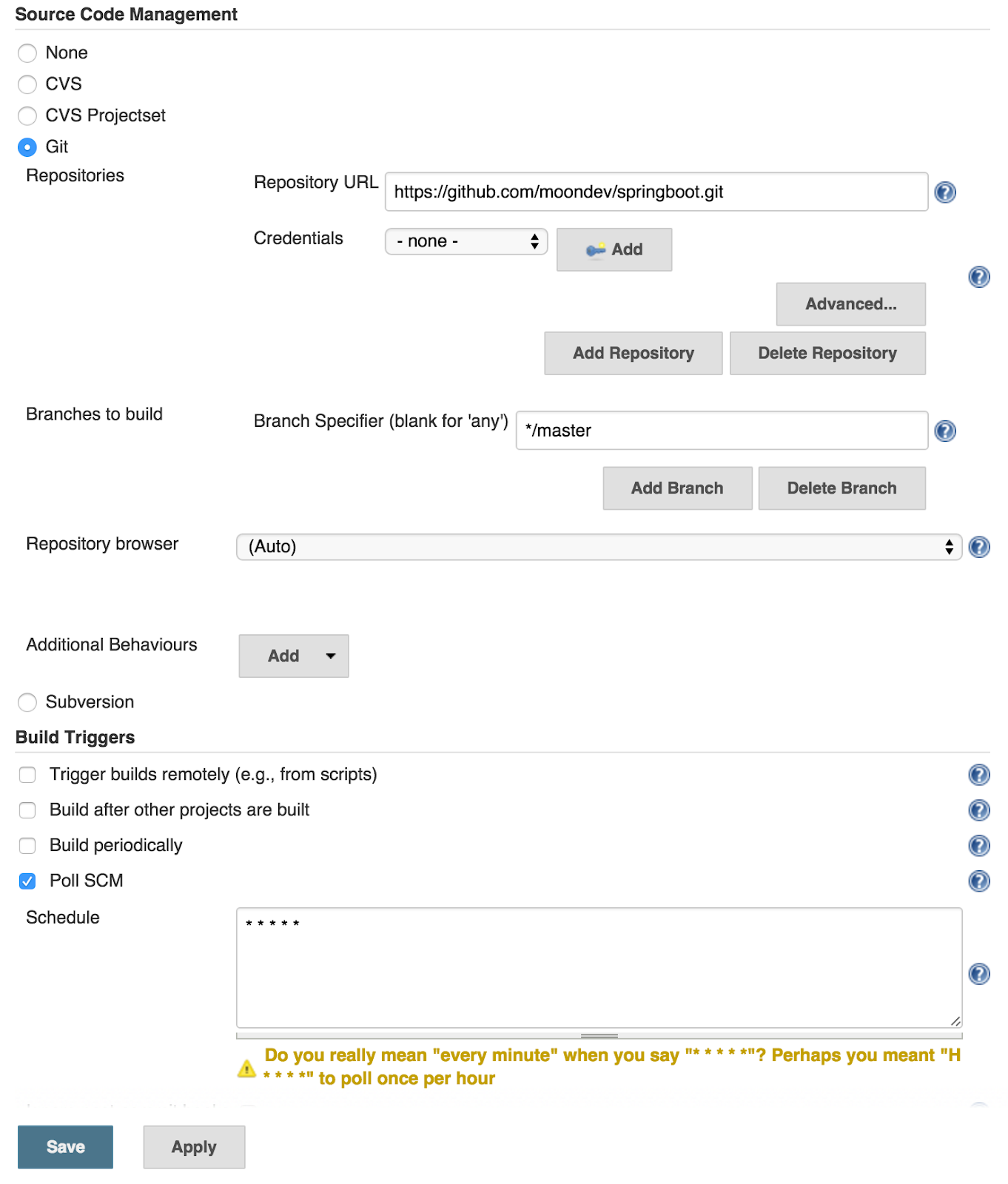
Source: Spinnaker
Setting Up a Deb Repository
A deb repository is essential for managing and distributing .deb packages that Spinnaker will use for baking images. You can use tools like deb-s3 or aptly to set up and host the repository:
- deb-s3: Create an S3 bucket with static website hosting enabled. Install the deb-s3 gem on your Jenkins server and upload your packages to the bucket.
- aptly: Install aptly and create a local repository on your Jenkins server. Use nginx to host the repository on port 9999, making it accessible to Spinnaker for package installations.
Integrating Spinnaker with Jenkins and Deb Repository
- Configure Spinnaker for Jenkins: Edit the spinnaker-local.yml configuration file to add Jenkins as a master and enable the igor service. Provide the Jenkins server URL, username, and password.
- Add deb repository to Rosco: In the rosco.yml file, add your repository URL to the debianRepository field. This allows Rosco to install packages during the baking stage.
Creating Applications and Pipelines in Spinnaker
Once the basic setup is complete, you can create applications and pipelines in Spinnaker to automate deployments:
- Create a Spinnaker application: Group your resources and pipelines logically by creating an application in Spinnaker. This makes it easier to manage related resources like load balancers, server groups, and pipelines.

Source: Spinnaker
- Set up a pipeline: Configure the following:
- Pipeline Trigger: Use Jenkins job triggers to start pipelines when new code is pushed to the repository.
- Build and Bake Stages: Add stages to build the application, bake the image, and deploy it to the target environment.
- Deploy Stage: Configure server groups with load balancers and instance types. Set the desired instance count and region for deployment.
Related content: Read our guide to Spinnaker vs Jenkins (coming soon)
Spinnaker Limitations
Spinnaker comes with several limitations that can affect its adoption and usability. These limitations were reported by users on the G2 platform:
- Complexity in setup and configuration: Setting up Spinnaker from scratch can be challenging, particularly for organizations with specific or non-standard infrastructure requirements. The installation process often requires significant effort, specialized knowledge, and purpose-built installers.
- High resource consumption: Spinnaker is resource-intensive and can strain system resources when handling large datasets or complex workflows. It requires substantial memory and processing power, making it less suitable for smaller environments or budget-conscious organizations.
- Limited monitoring and notifications: Spinnaker lacks built-in monitoring features, which can be problematic for maintaining high availability. For example, if a Spinnaker monitoring pod fails, the platform does not automatically notify the owner, leading to potential downtimes or delayed responses to issues. Users often need to integrate third-party monitoring tools.
- Pipeline structure and workflow limitations: The pipeline workflow in Spinnaker is unidirectional, which means there is no option to backtrack if an error occurs or a step needs modification. Additionally, manual judgment steps, which require user input to proceed, can cause bottlenecks if multiple pipelines are queued at the same phase.
- Lack of plugin and extension support: Unlike tools such as Jenkins, Spinnaker has limited support for plugins and custom extensions. This makes it harder to adapt the platform to unique use cases or integrate with less common tools.
- UI and usability challenges: Spinnaker’s user interface is functional but not particularly intuitive. Users have noted that the UI could benefit from improvements in usability and design to make navigation and pipeline management more seamless.
- Pipeline as code and SCM management: While Spinnaker has been developing beta features for “Pipeline as Code,” this area remains underdeveloped compared to other platforms. This gap can be frustrating for teams accustomed to defining pipelines declaratively in source control. Spinnaker also struggles with seamless SCM (source code management) integration.
- Feature gaps and limitations in ECS and custom scenarios: Spinnaker lacks support for some functionality, such as container overrides in Amazon ECS. It also has limited options for experimenting with custom deployment scenarios, like temporarily routing traffic to external resources for testing.
Notable Spinnaker Alternatives
1. Codefresh
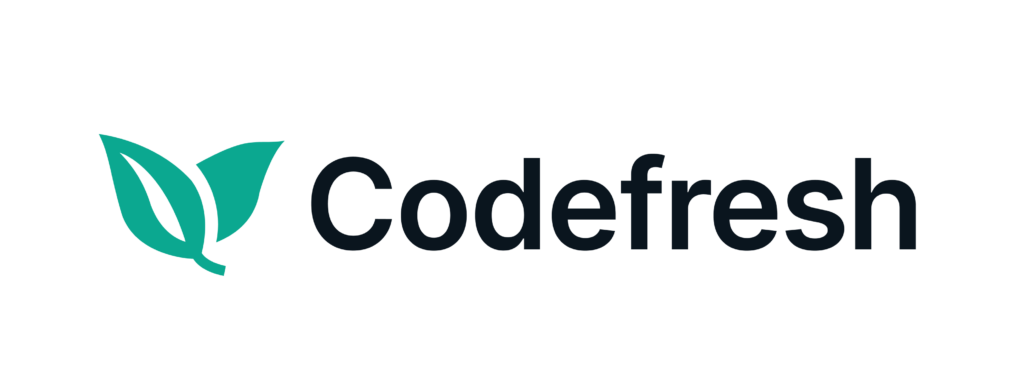
Codefresh is a modern Kubernetes and GitOps solution powered by Argo, bringing the best open-source tools to a reliable enterprise-grade DevOps toolchain. Codefresh provides a secure and thoroughly validated runtime allowing you to fully tap the power of Argo Workflows, Events, CD, and Rollouts. The best practices of GitOps are built into Codefresh while still giving teams the flexibility and control they need.
Codefresh provides unrivaled visibility from code-to-cloud into your entire continuous integration and continuous delivery workflows. It offers a streamlined, automated approach to advanced deployments like canary, blue-green, and experimental releases. Codefresh has a unified user interface for all of your builds and deployments as well as a centralized management control plane for your Codefresh Argo runtimes. It integrates with your best-of-breed tools to give you the best possible software delivery process.
Here are some of the key features Codefresh offers:
- Enterprise-grade Argo runtime with all Argo Project components
- Optional hosted runtime for Argo CD
- Centralized management control plane for all Argo runtimes
- Customized Argo Workflows and Events for CI and CD
- Integrated dashboard for Dora metrics
- Unified Argo user interface with end-to-end traceability
- Comprehensive dashboards for tracking releases and deployments
- Insights into images, build artifacts, and their environment usage
- Detailed performance breakdown of resource usage during workflows
- Codefresh Hub for Argo Workflows for reusable Workflows templates
- Native integration with popular secret management tools
- Cross-application single sign on with centralized management
- Integration with issue management like Jira
- Integration with other CI systems such as Jenkins, Github actions etc.
- GitOps Argo Autopilot runtime installer
- Additional security validation and intercompatibility testing for Argo components
- Award-winning support and professional services
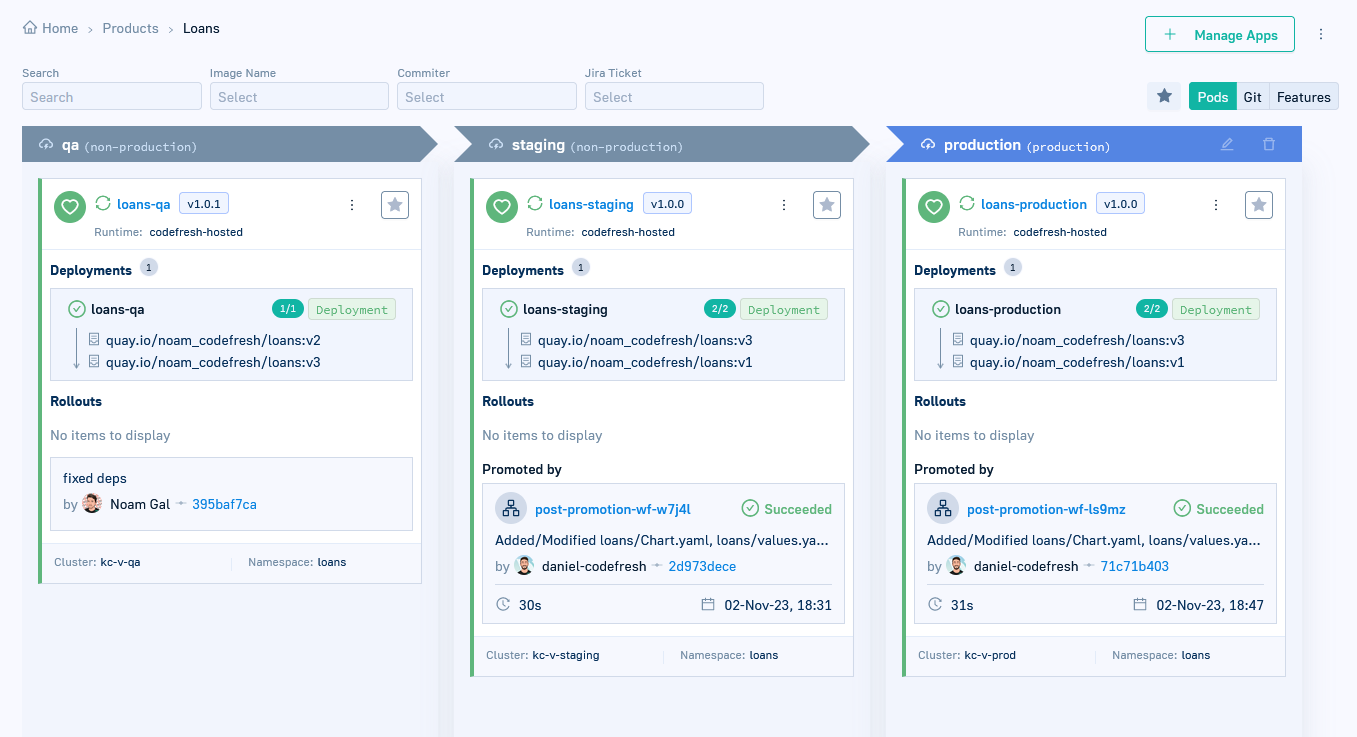
2. Argo CD

Argo CD is a declarative, GitOps-based continuous delivery tool for Kubernetes environments. By leveraging Git as the single source of truth for application state, it ensures that application definitions, configurations, and environments remain version-controlled, automated, and transparent.
License: Apache-2.0
Repo: https://github.com/argoproj/argo-cd
GitHub stars: 17k+
Contributors: 1400+
Key features include:
- Automated deployment: Automates the deployment of applications to target environments by continuously monitoring their desired states in Git repositories.
- Support for multiple templating tools: Compatible with popular tools like Kustomize, Helm, Jsonnet, and plain YAML for flexible application configuration.
- Multi-cluster management: Allows organizations to deploy and manage applications across multiple Kubernetes clusters from a centralized interface.
- Single sign-on (SSO) and role-based access control (RBAC): Provides authorization mechanisms with support for OIDC, OAuth2, LDAP, and SAML, ensuring secure access for multi-tenant environments.
- Drift detection: Continuously compares live application states with desired states, visualizing discrepancies and providing options to resolve them automatically or manually.

3. Octopus Deploy

Octopus Deploy is a platform for automating software deployments across multi-cloud, hybrid, and on-premises environments. It simplifies deployment workflows, ensuring they are reliable, repeatable, and auditable. It supports a range of use cases, from containerized applications to traditional deployments
License: Commercial
Key features include:
- Reliable deployments with rollback capabilities: Provides a consistent deployment process across all environments. Built-in rollback support allows teams to quickly revert to previous versions in case of errors.
- Runbooks for operations automation:Includes runbooks for automating routine and emergency operational tasks. These reusable workflows free teams from repetitive work.
- Container deployment support: Simplifies container deployments with its user interface, making Kubernetes and container services accessible without relying on command-line tools. Supports YAML configurations, Helm charts, and offers a seamless experience for managing containerized workloads.
- Multi-tenancy support: Enables efficient multi-tenancy by allowing deployments to multiple customers or locations without duplicating the deployment process.
- Governance, risk, and compliance (GRC): Includes auditing, role-based access control (RBAC), and single sign-on (SSO) capabilities to ensure secure and compliant operations.
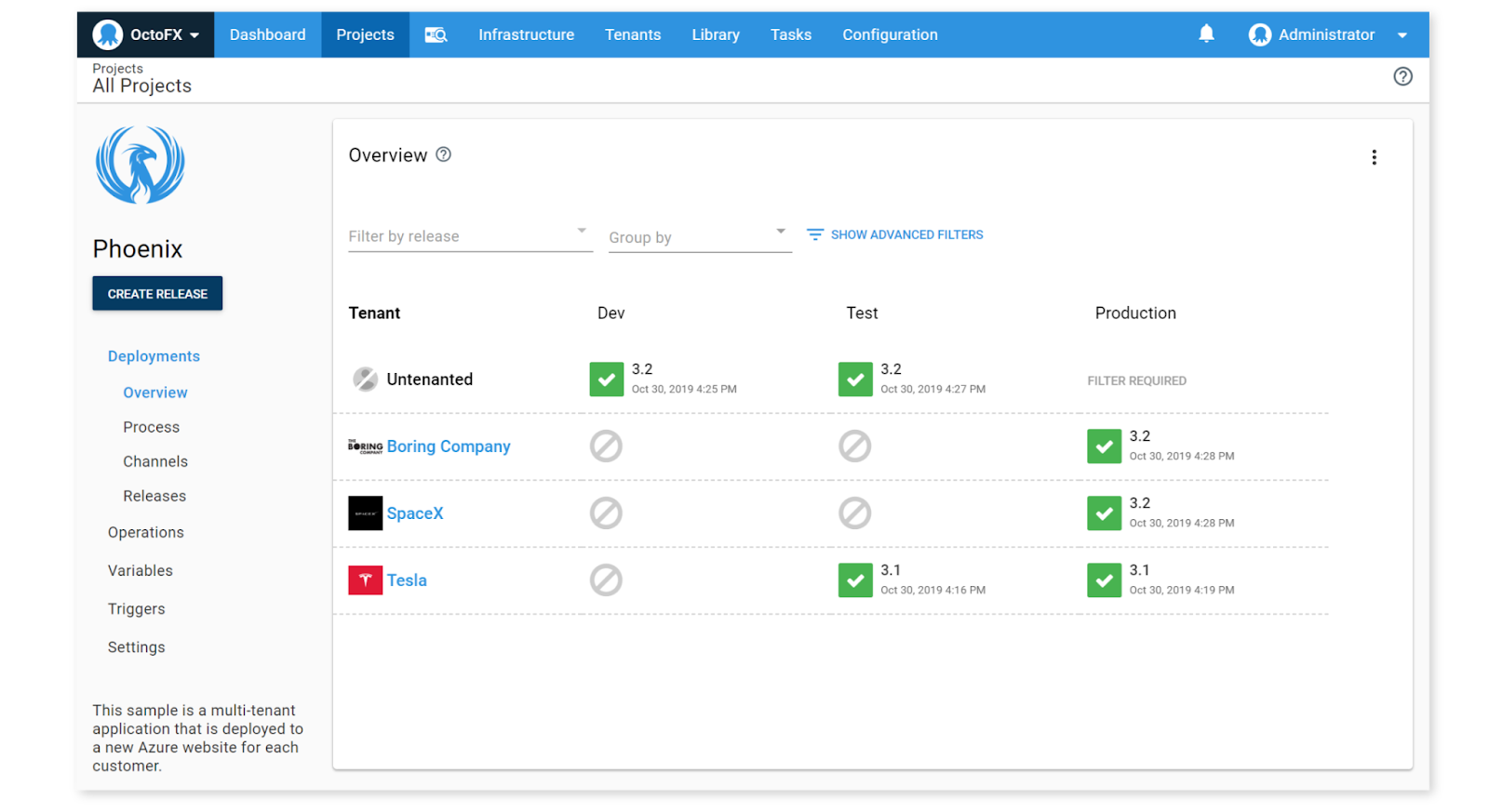
Source: Octopus
4. Harness

Harness is a CI/CD platform to accelerate software delivery while reducing developer and DevOps efforts. Using AI, it offers faster build times, integrations, and automation to simplify every stage of the CI/CD pipeline.
License: Apache-2.0
Repo: https://github.com/harness/harness
GitHub stars: 32K+
Contributors: 40+
Key features include:
- Multi-language and multi-platform support: Works with any source code manager, integrates with popular git providers like GitHub, GitLab, and Bitbucket, and supports a range of programming languages including Java, Python, Go, and Ruby.
- AI-powered build acceleration: Uses features like Test Intelligence, Cache Intelligence, and Docker-layer caching to accelerate builds. These capabilities reduce build times, speed up feedback loops, and optimize resource utilization.
- Test intelligence for faster testing: Uses AI-based test intelligence to run only relevant tests, reducing test cycles by 80%.
- Security and vulnerability management:Integrates automatic security scanning into pipelines and supports third-party tools for SAST, SCA, DAST, and container security. AI-driven prioritization highlights critical vulnerabilities and recommends fixes, ensuring secure and reliable deployments.
- Artifact and package management: HMakes it easy to package and publish builds to artifact repositories or container registries like Docker Hub, Google Cloud Storage, and JFrog Artifactory.
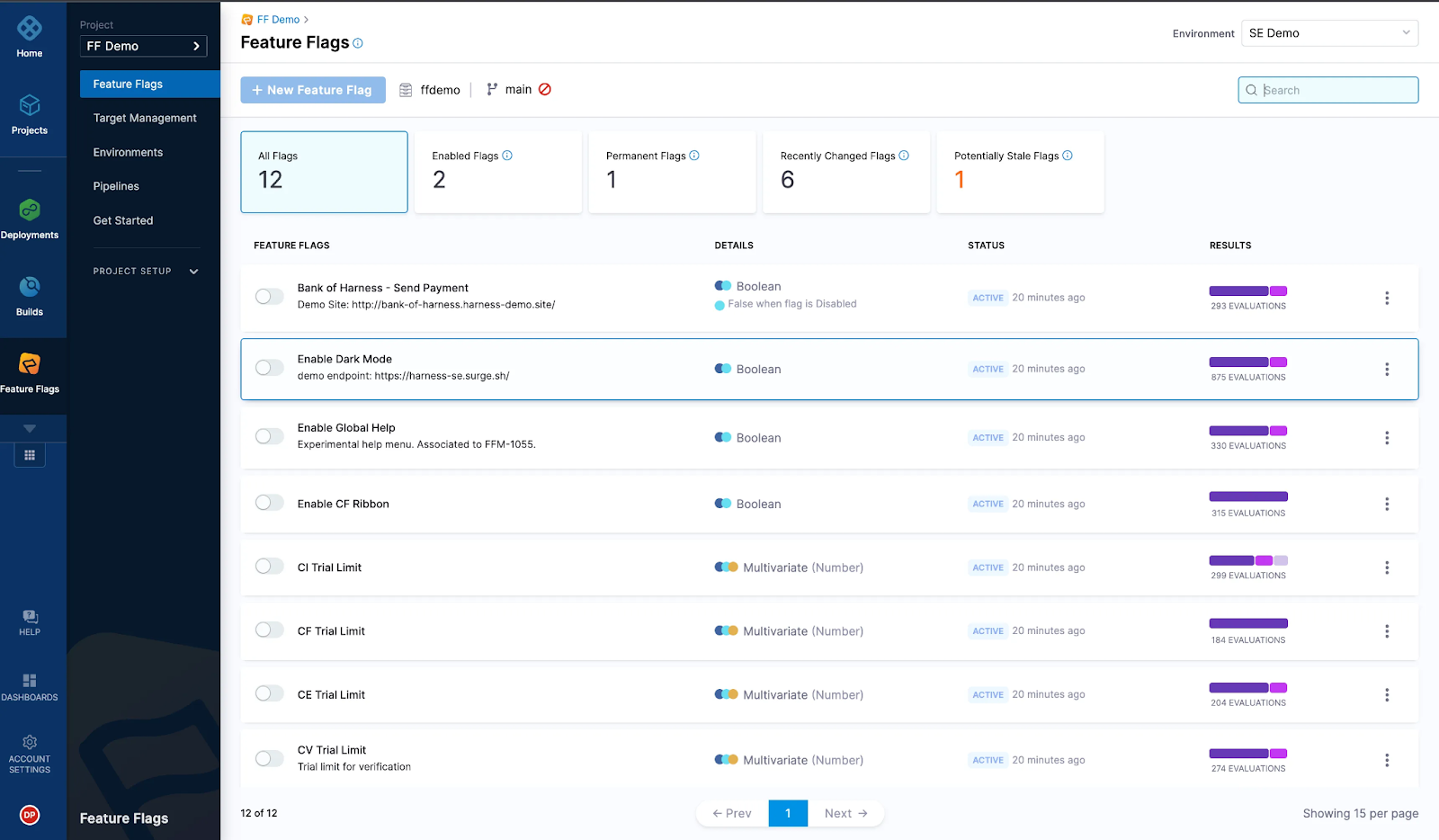
Source: Harness
5. GitLab CI/CD
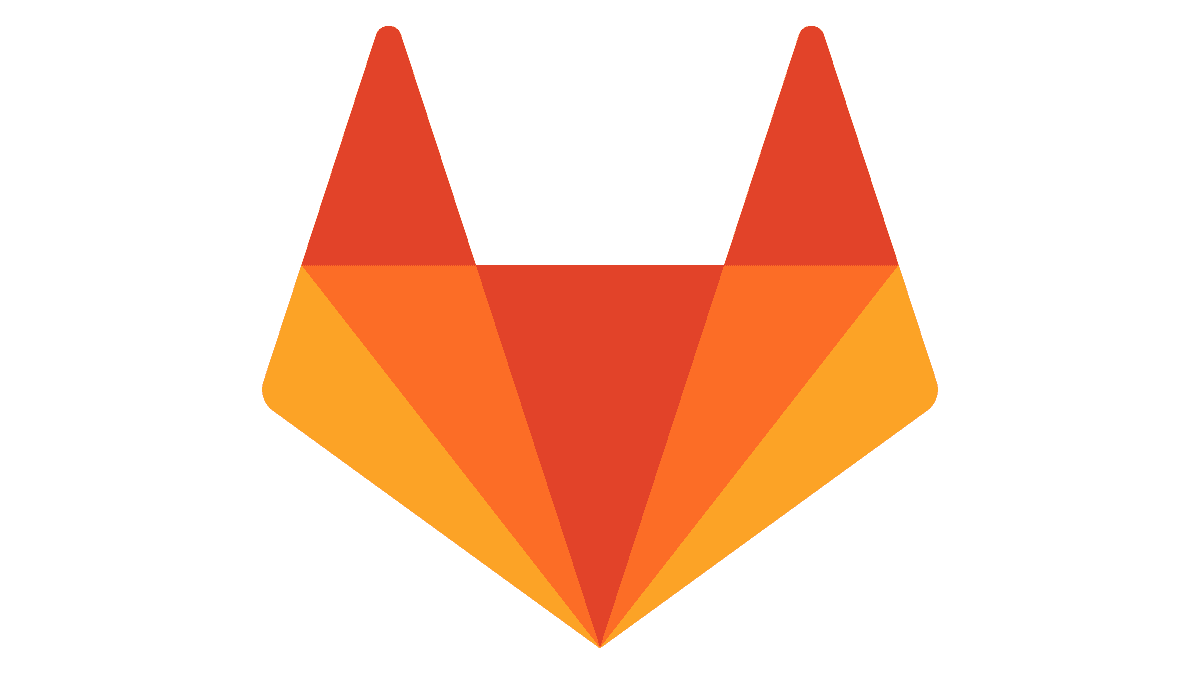
GitLab CI/CD is a platform that automates the software development lifecycle, enabling teams to build, test, and deploy applications efficiently. By integrating continuous integration and continuous delivery into a single application, GitLab simplifies workflows and supports collaboration among development, security, and operations teams.
License: CC BY-SA 4.0, MIT Expat, other licenses
Repo: https://github.com/gitlabhq/gitlabhq
GitHub stars: 23K+
Contributors: 1K+
Key features include:
- Automated software delivery: Automates the building, testing, packaging, and deployment of code from commit to production, resulting in faster releases and higher-quality software.
- In-context testing: Each code change triggers automated tests—such as unit, performance, and load tests—with results displayed within the merge request. This immediate feedback allows developers to quickly identify and resolve issues.
- Safe deployment practices: Supports deployment strategies like canary and blue-green deployments, enabling teams to implement guardrails and automatically roll back if critical alerts are detected.
- Visibility: Offers a unified data store to provide transparency across environments and deployments, enabling performance testing, incident management, and tracking of delivery metrics through built-in dashboards.
- Infrastructure flexibility: GitLab’s pipelines can deploy across various environments, including virtual machines, Kubernetes clusters, and multiple cloud providers such as AWS, Google Cloud Platform, and Microsoft Azure.
- AI integration: Incorporates generative AI across the software development lifecycle, offering features like suggested code reviewers and security vulnerability explanations.
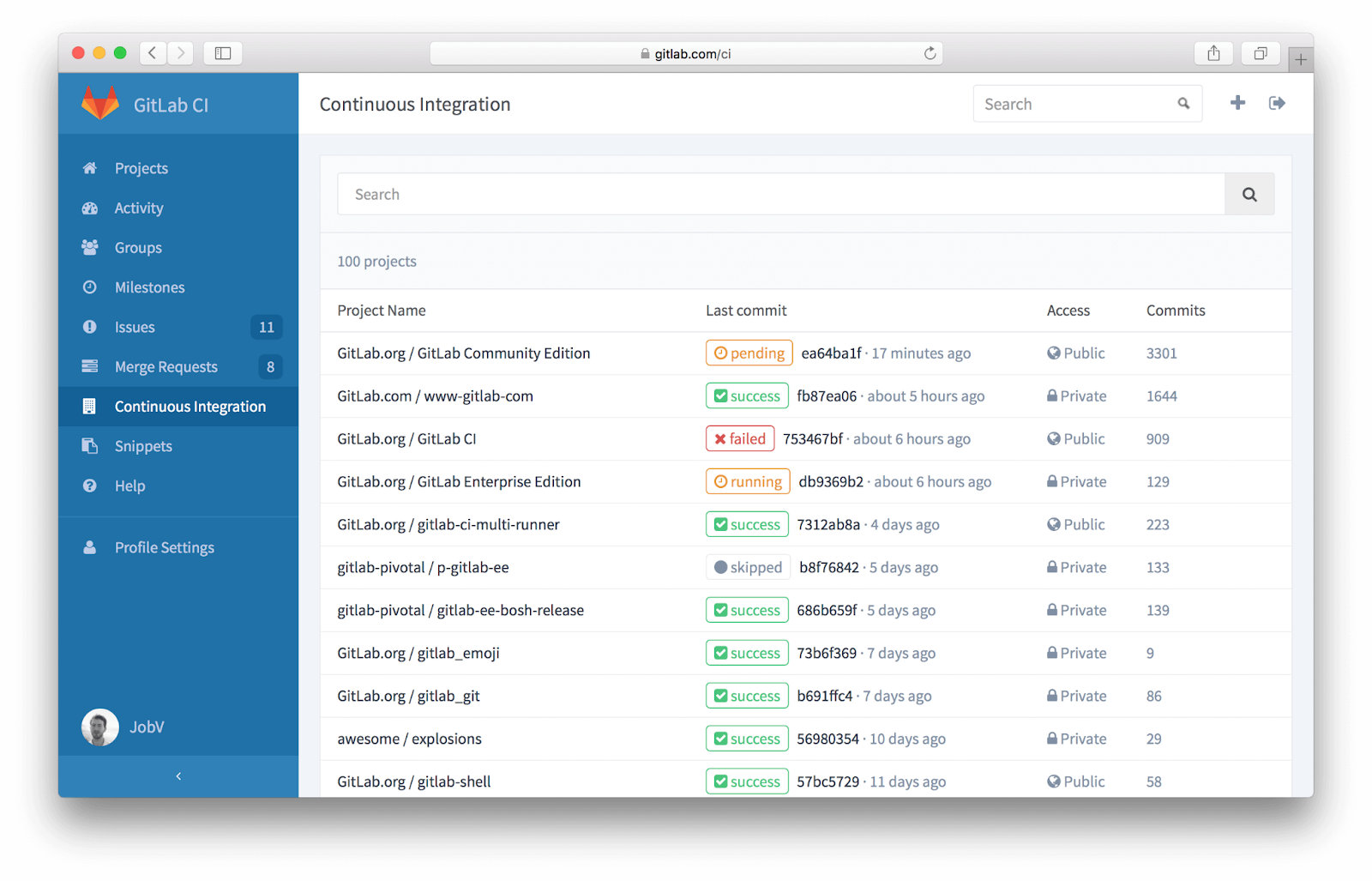
Source: GitLab
Learn more in our detailed guide to Spinnaker alternatives (coming soon)
Conclusion
The choice of a continuous delivery platform depends on the requirements of an organization’s workflows, infrastructure, and scalability needs. While tools like Spinnaker excel in multi-cloud deployments and advanced deployment strategies, other solutions may offer distinct strengths for some teams. By evaluating factors such as integration capabilities, ease of use, and resource requirements, organizations can select a platform that supports their CI/CD processes.
See Additional Guides on Key Kubernetes Topics
Together with our content partners, we have authored in-depth guides on several other topics that can also be useful as you explore the world of Kubernetes.
Argo CD
Authored by Codefresh
- [Guide] Argo Support: All the Options to Get Support for Argo Projects
- [Guide] Understanding Argo CD: Kubernetes GitOps Made Simple
- [Blog] Progressive Delivery for Kubernetes Config Maps Using Argo Rollouts
Argo Rollouts
Authored by Codefresh
- [Guide] Argo Rollouts: Quick Guide to Concepts, Setup & Operations
- [Blog] Minimize Failed Deployments with Argo Rollouts and Smoke Tests
- [Product] Codefresh | GitOps Software Delivery Platform
Argo Workflows
Authored by Codefresh
- [Guide] Argo Workflows: The Basics and a Quick Tutorial
- [Guide] Learn Argo Workflows with 8 Simple Examples
- [Blog] Crafting the Perfect Java Docker Build Flow
Deploy more and fail less with Codefresh and Argo